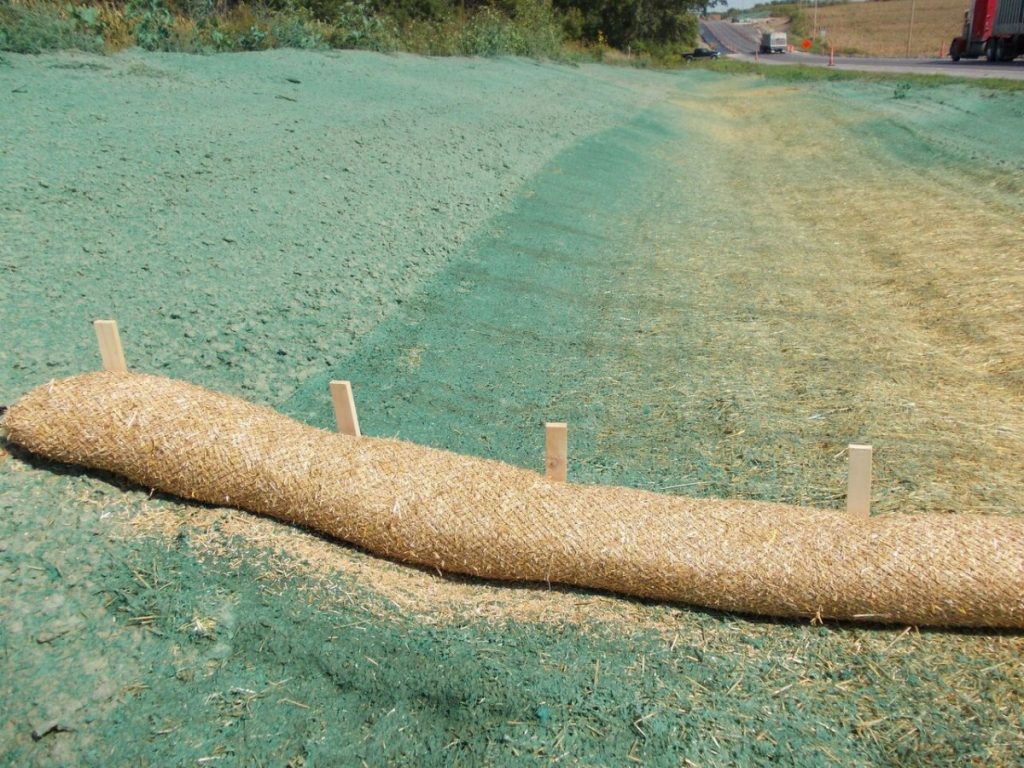The Problem of Soil Erosion
Let’s face it, we have an impact on this earth, even when itcomes to eroding soils. To be fair, weare not always directly responsible, we do not control mother nature and thewind and the rain that tend to wash away the uppermost layer of topsoil on theland. Indirectly however, we tend toremove vegetation that protects topsoil from mother nature’s wrath. We have allowed livestock to overgrazerangelands, brought in invasive weeds that lead to more frequent andcatastrophic wild fires, cleared out land for infrastructure, mined and drilledland for precious minerals and fossil fuels, the list of land disturbances goeson.

Our influence on the land is not going away and is simplysomething we must deal with. Once thenatural vegetation is disturbed, we must put energy back into the system toprotect topsoil from blowing away in the wind, or washing away during heavyrain. Lack of action on our part canhave devastating effects. Once fertile topsoil is removed, plant and animallife as we know it can no longer survive, and lakes and streams can becomepolluted. But we do act, and our effortshave saved millions of acres to date. What is our strategy?
Assess Ecological Site and Reseed
First, ecologists will recommend a seed mix to be applied based on historical data called Ecological Site Descriptions. These data tell us the trees, shrubs, wildflowers, and grasses that existed on the bare soil before the disturbance. Depending on the size of the disturbance, the recommended seed is then applied aerially, by drill, or hydroseeded/broadcast. In some cases, the disturbance has removed critical soil nutrients and we must apply fertilizers, soil inoculants, and other amendments that rejuvenate the health of the soil.
Putting seed back into the soil so that vegetation can cover bare ground is the single most important step in soil erosion control. Plants are the best form of permanent erosion control. Unfortunately, plants don’t spring up from seed immediately. Some seeds wait years to germinate, especially in the Western United States where conditions are harsh and rain during the growing season can be hard to come by. For this reason, there are a number of techniques and products that are used to temporarily control for soil erosion while plants establish.
Cover Crops for Temporary Erosion Control
While native plants may take years to establish, annual cover crops are often added to seed mixes because they have short germination periods and can put soil stabilizing roots down and establish with little rainfall. Wheat, Oats, and Barley are common cover crops used in these seed mixes and recently hybrids of these species have been made that produce sterile seed. Granite Seed carries one such product called Quickguard. Sterile seed is an important attribute for cover crops as they won’t naturally reseed themselves and compete with the more desirable native species in future growing seasons.
Mulch and Tackifier
Hydroseeding is a handy way to spread seed with water, woodmulch, and a plant-based glue called tackifier that sticks the seed and woodmulch to the ground and secures the soil temporarily. Granite Seed carries a range of mulch products and tackifiers suited to fit most projects. Heavy duty mulch combined with strong tackifiers are used for hillsides while more lightweight mulches and tackifiersare more cost effective for large areas that are relatively flat.
Erosion Control Blankets
For some projects where hydroseeding is not an option such as steep slopes that are out of reach of equipment, or stream channel restoration projects, erosion control blankets can be used to stabilize soil. These blankets come in many forms, most are made up of straw, shredded coconut, or aspen wood fibers. Permanent matting known as “Turf Reinforcement Mats” are often used for stream channels or canyon wall projects where the natural plant density is sparse and cannot be relied on for permanent erosion control.
Wattles and Silt Fence
Erosion blankets are often used together with Wattles and Silt Fence, which act as erosion check dams that shorten the slope of a hillside. Wattles and Silt Fence are often used around construction to temporarily keep sediment from escaping the site and into urban drainage systems.
A Dynamic Industry
The reclamation industry has come a long way in controllingfor soil erosion, yet the problem still persists, projects sometimes fail, soilstill washes away, and entire ecosystems are in jeopardy every year. Research is ongoing to find ways to make better products and improve seed establishment. This is a dynamic industry and the future is bright.